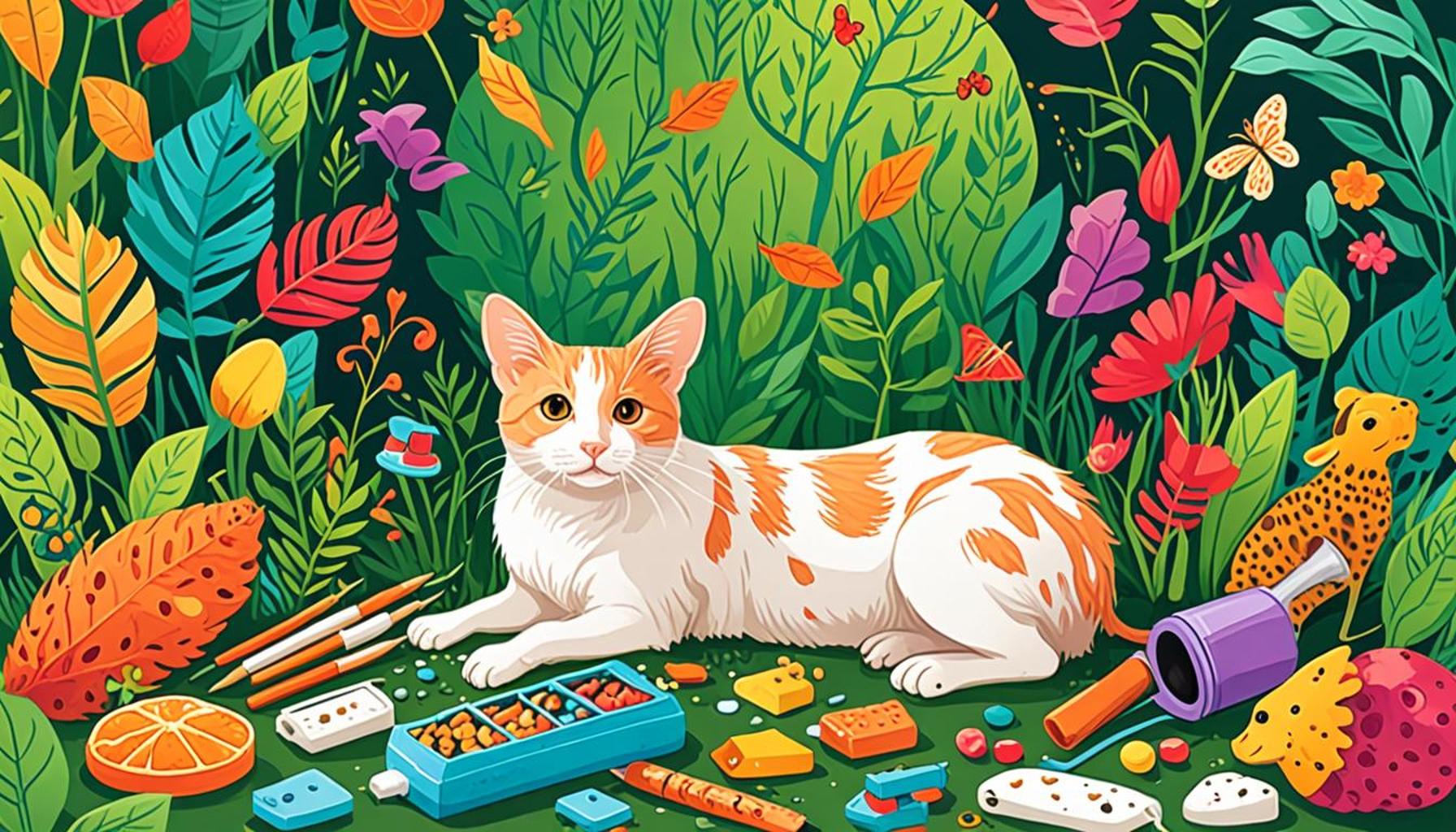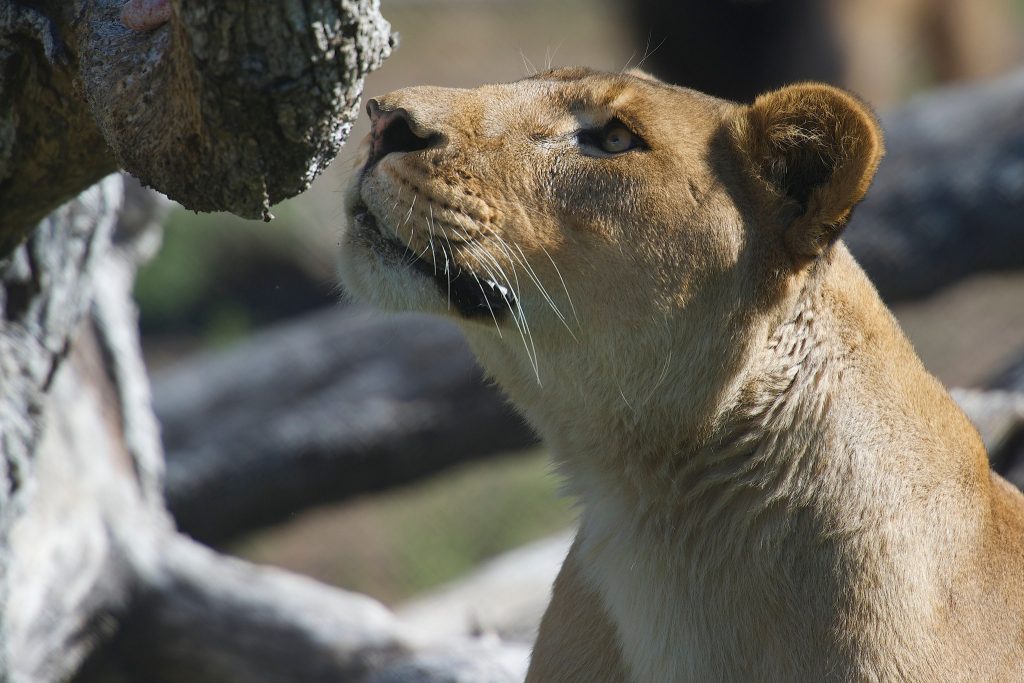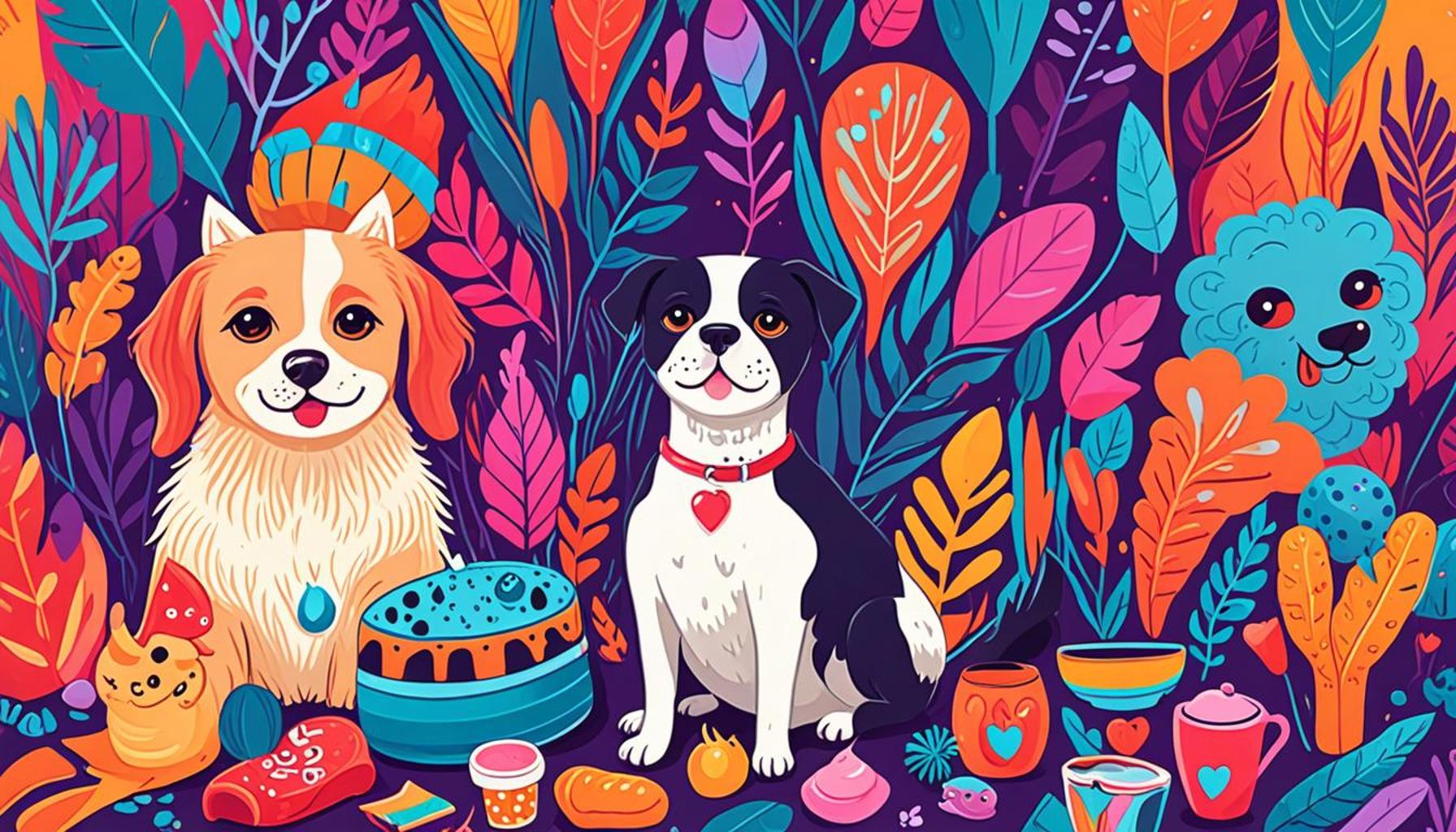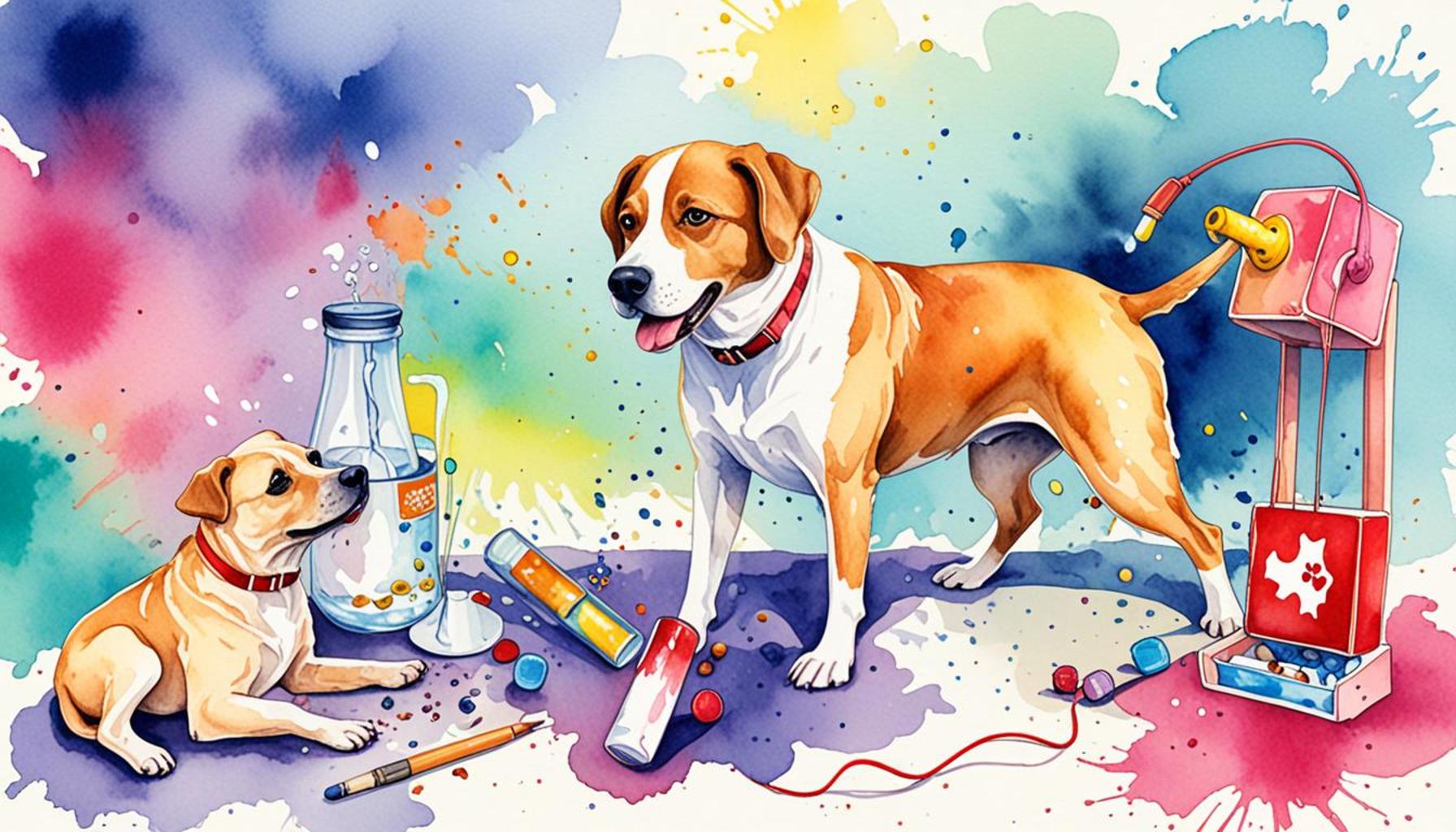The Importance of Environmental Enrichment for the Behavioral Health of Small Pets

Small pets, often seen as delightful companions, require more than just a balanced diet and clean living conditions; their behavioral health is a vital component of their overall well-being. Many owners unintentionally neglect the need for mental stimulation, focusing primarily on physical care aspects. However, for pets from hamsters to guinea pigs, an engaging and enriched environment is key to a happy and healthy life.
The Role of Environmental Enrichment
Environmental enrichment can be defined as the inclusion of various stimuli and activities in an animal’s habitat, aimed at promoting instinctive behaviors. This is crucial for small pets, as it significantly enhances their quality of life. An enriched environment provides:
- Physical stimulation: Engaging tools like exercise wheels, tunnels, and climbing structures facilitate movement and exercise, crucial for maintaining optimal health.
- Mental challenges: Interactive toys and puzzles can stimulate problem-solving skills. For example, treat-dispensing toys can capture a pet’s curiosity and encourage them to think critically.
- Social interaction: Opportunities for bonding with humans or other friendly pets can improve emotional health. Regular playtime and gentle handling can help foster a trusting relationship and reduce fear or anxiety.
In Nigeria, even with limited resources, pet owners can create a dynamically engaging environment for their small pets. Simple items like repurposed cardboard boxes, homemade tunnels from PVC pipes, or even safe household items can serve as excellent play areas. Local artisans or markets often sell affordable materials that can be transformed into stimulating habitats for pets. Such enrichment activities can lead to happier, healthier pets that exhibit reduced stress levels and fewer behavioral problems.
What Happens Without Enrichment?
The absence of environmental enrichment can lead to dire consequences for small pets. Boredom can manifest in destructive behaviors, such as chewing on cage bars or digging excessively. Additionally, pets may experience increased anxiety, which can lead to serious health issues, including loss of appetite or obsessive behaviors. Furthermore, without social interaction, pets can develop limited social skills that hinder their ability to interact appropriately with humans and other animals.
To cultivate a fulfilling life for small pets, it’s essential to grasp the significance of environmental enrichment. This is not merely a trend; it’s a fundamental aspect of pet care. The journey towards creating a vibrant sanctuary for small pets entails understanding their needs and implementing effective strategies. Investing time and creativity into enriching their environment can lead to a joyful, thriving small pet that brings endless joy to its owner.

CHECK OUT: Click here to explore more
Creating a Balanced Habitat for Small Pets
For small pets, the right living environment can make a world of difference, as it transforms their day-to-day experiences from mundane to captivating. An environmental enrichment strategy not only accommodates their physical needs but also fosters a sense of security and joy—a fundamental aspect of their behavioral health. The dimensions of enrichment are multifaceted, hinging on providing sensory, social, and cognitive stimulation that aligns with the natural instincts of these small animals.
Understanding Natural Behaviors
Different species have unique behavioral traits that reflect their natural habitat. For instance, hamsters are nocturnal animals that thrive on foraging and burrowing instincts. They enjoy creating nests and should have opportunities to dig and hide in bedding materials. On the other hand, guinea pigs are highly social creatures that thrive in groups and exhibit playful behavior. They enjoy interactivity with each other and their environment, and thus, a solitary guinea pig may exhibit signs of stress or boredom. Understanding these natural behaviors is crucial for owners who wish to recreate an engaging environment for their furry friends.
Each species requires distinct types of stimuli for optimal enrichment, and an awareness of this can lead to tailored experiences that tap into their innate behaviors. A small rabbit, for example, loves to chew on wooden toys, which helps maintain dental health and prevents boredom, while a pet rat may enjoy climbing structures and tunnels that stimulate their exploratory instincts.
The following are essential facets of environmental enrichment for small pets:
- Foraging Opportunities: Providing access to food in ways that require effort—such as hiding pellets in shredded paper, using foraging toys, or scatter feeding—can stimulate natural foraging behaviors. This approach not only keeps them engaged but also creates a sense of achievement that minimizes boredom.
- Sensory Stimulation: Introducing items that appeal to the senses—like different textures, smells, and sounds—can significantly enhance the living space. Natural materials like wood, grass, and safe herbs can encourage exploration. Adding items such as crinkly paper or small bells can further enhance their sensory experience.
- Varied Spaces and Levels: Small pets benefit from multi-level habitats that allow climbing, hiding, and viewing the surroundings. Creating areas that offer both open space and cozy hideouts satisfies their need for security and adventure, giving them a chance to explore and retreat as needed.
DIY Enrichment Ideas for Nigerian Environments
In Nigerian households, pet owners can implement innovative enrichment strategies even with modest resources. Utilizing local materials for dynamically enriching habitats can be remarkably effective. For example, creating tunnels from empty plastic bottles can captivate a hamster’s attention, while assembling hides using cardboard boxes can serve as both shelter and playtime stimulation. This innovation can tap into their natural instincts without incurring significant costs.
Incorporating local flora is also a fantastic way to enhance enrichment. Safe leafy greens like ugu (pumpkin leaves) or scent-rich herbs such as mint can serve both as toys and snacks, integrating nutrition into play. Pet owners can also provide small branches from fruit trees which can be chewed on, fostering their chewing instincts while ensuring dental health.
When considering the living arrangements for small pets, it is crucial to remember that a well-enriched environment is not a luxury but a necessity. Engaging their natural instincts through carefully thought-out enrichment strategies fosters healthier, happier pets. By recognizing and addressing these crucial needs, the average pet owner can contribute significantly to the mental and emotional well-being of their furry companions. Ultimately, investing time and creativity in enriching their habitats leads to rewarding experiences for both the pets and their owners.
The Importance of Environmental Enrichment for the Behavioral Health of Small Pets
When it comes to the well-being of small pets, environmental enrichment plays a crucial role in promoting their behavioral health. Small pets, such as rabbits, hamsters, and guinea pigs, can often experience stress, boredom, and various behavioral issues due to a lack of stimuli in their environments. This is where the significance of creating an engaging habitat cannot be overstated.Environmental enrichment involves providing pets with stimulating experiences that allow them to engage in natural behaviors. This not only boosts their physical health, making them more agile and active, but also enhances their mental well-being. Activities such as foraging, climbing, and exploring are essential for small animals, helping reduce stress and anxiety.A well-enriched environment can incorporate various elements like tunnels, toys, and even safe plants. For instance, hiding treats within their habitat encourages natural foraging instincts, making meals more exciting and engaging. In addition to physical toys, mental challenges, such as puzzle feeders, can also stimulate small pets’ minds.The benefits of environmental enrichment extend beyond simple amusement. By fostering a dynamic living space, owners can prevent destructive behaviors, promote socialization, and ultimately lead to happier, healthier pets. The importance of environmental enrichment is backed by research, showing that animals who are engaged and stimulated are less likely to exhibit signs of distress.As we explore further, it becomes evident that the right enrichment strategies tailored to each species can significantly enhance small pets’ quality of life. Understanding the specific needs and natural behaviors of pets will guide pet owners in creating optimal environments that prioritize their well-being.
| Benefits of Environmental Enrichment | Key Features |
|---|---|
| Improved Mental Health | Stimulates problem-solving skills and reduces anxiety. |
| Enhanced Physical Activity | Encourages movement and prevents obesity-related issues. |
By focusing on the intrinsic needs of small pets and implementing enriching elements into their living environments, owners can greatly enhance their animals’ overall quality of life. This proactive approach to pet care not only fosters a sense of happiness in pets but also strengthens the bond they share with their owners.
LEARN MORE: This related article may interest you
Innovative Enrichment Practices for Better Welfare
As pet lovers strive to provide the best care for their small companions, understanding the nuanced requirements for environmental enrichment becomes paramount. Not only does enriching their habitat enhance their day-to-day activities, but it also has long-term benefits for their behavioral health by reducing stress and preventing behavioral issues. Innovations in enrichment strategies can yield highly stimulating environments that cater to the emotional and physical needs of pets.
Interactive Playtime
Incorporating interactive playtime into daily routines can significantly improve small pets’ welfare. Activities such as obstacle courses made from household items, or even simple games like hide-and-seek using treats, are effective in enriching their lives. Research has shown that pets who engage in regular, interactive play exhibit better mental health and lower anxiety levels. It’s important to rotate toys frequently to keep their interest high, preventing the stagnation of play experiences.
Furthermore, setting aside time for supervised play sessions allows owners to engage directly with their pets, enhancing the bond between owner and animal. This interaction itself serves as an enriching experience, as socialization is a key requirement for many small pet species, particularly guinea pigs and rabbits.
The Power of Multi-Sensory Enrichment
Small pets thrive in environments rich in sensory experiences. The addition of different sounds, scents, and textures can capture their attention and stimulate their innate curiosity. Soundscapes, such as soft music or nature sounds, can create a soothing atmosphere while enhancing their auditory experience. For those looking to create a sensory-rich environment, consider the following:
- Textured Surfaces: Incorporate woven mats, soft bedding, and natural materials that your small pet can explore and interact with to facilitate sensory engagement.
- Odor Enrichment: Utilizing non-toxic herbs and scents, such as lavender or chamomile, not only enhances their habitat but promotes relaxation and wellbeing.
- Cognitive Toys: Interactive feeders and puzzle toys can challenge their problem-solving skills and stimulate mental growth—critical aspects of their overall health.
For example, the use of puzzle toys that reward pets with treats encourages them to think critically and engage with their environment, fostering cognitive development. Such toys can be particularly beneficial for species known for their intelligence, like rats and guinea pigs.
Creating Community Spaces
Another vital element to consider in enhancing small pets’ behavioral health is their social environment. In Nigerian households, this can include establishing safe communal spaces where multiple pets can interact. Group-enrichment activities—like allowing guinea pigs to explore a safe, enclosed area together or letting rabbits hop around a playpen—can provide necessary social stimulation, fulfill their inherent need for companionship, and create an engaging atmosphere.
Building a thriving community space can translate into noticeable behavior changes, as pets exhibiting signs of stress may find solace in social interactions with their kind. Their interactions in these communal setups enhance their quality of life and contribute positively to their emotional well-being.
Small pets are far more than just companions; they are dynamic beings with unique instincts and behavioral needs. By implementing innovative enrichment practices that cater to these aspects, pet owners can create stimulating, inviting environments that promote not just survival, but also a vibrant, fulfilling life for their furry friends. Environmental enrichment is a joyful journey filled with learning opportunities for both pets and their owners, making the investment profoundly meaningful in their shared lives.
CHECK OUT: Click here to explore more
Conclusion
In summary, the significance of environmental enrichment in enhancing the behavioral health of small pets cannot be overstated. By understanding and addressing their unique needs through innovative methods such as interactive play, sensory stimulation, and socialization, pet owners can foster a fulfilling and enriching environment. The positive outcomes of these practices extend beyond mere entertainment; they substantially reduce stress and behavioral issues, ultimately enhancing the overall quality of life for these pets.
Moreover, as we embrace the cultural practices within Nigerian households, creating communal spaces for small pets to interact not only satisfies their social needs but also nurtures a sense of community among pets. It is essential to remember that engaging with small pets in these enriching ways can strengthen the bond between owner and animal, allowing for shared experiences that enrich both lives.
As responsible pet owners, the journey of environmental enrichment is an ongoing commitment that requires creativity, understanding, and patience. By consistently seeking out new ideas and adapting available resources—whether they are locally sourced materials or innovative toys—pet owners can provide small pets with a stimulating environment that fosters their mental, emotional, and physical well-being. Through such efforts, we can assure that our furry companions not only survive but thrive, leading happier and healthier lives.
Investing time and resources into environmental enrichment is not merely an act of care; it is a heartfelt commitment to the enrichment of their lives and our shared experiences. Ultimately, the effort put into this journey will yield immeasurable rewards, both for small pets and their devoted owners.



